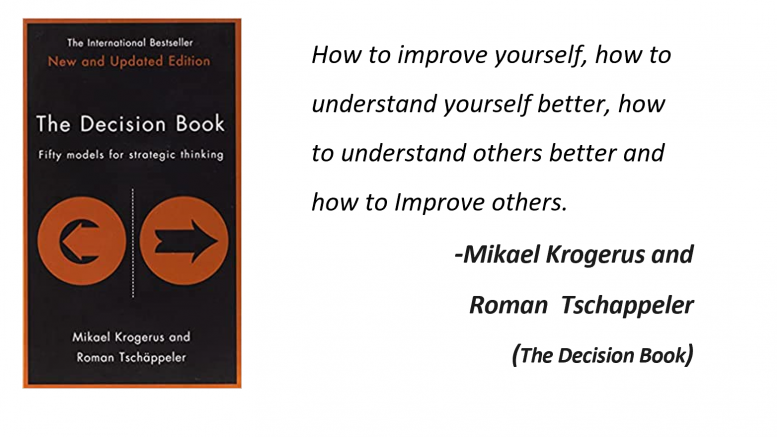I had become a great fan of mental models after I was introduced to Game Theory by my Economics professor back in college days. It came as no surprise I immediately added this book to my shopping cart as soon as I spotted it.
The book, as the title suggests, has fifty models from the known Eisenhower Matric and the SWOT model to lesser known the Swiss Cheese Model. Also, the book has bucketed these models into sections such as— How to improve yourself, how to understand yourself better, how to understand others better and how to Improve others, and finally a section on how a reader can use this book and out it to practice.
The book is brief and can well be completed within a day or two. These models are not something that can be used only for some academic opportunity rather to also make simple everyday decisions. Not only this, but the book can also come handy whilst making some presentation and you want to substantiate your ideas with a model to simplify and explain.
Also, as leaders this book was helpful for me to answer questions such as How do I make the right decision? How can I motivate myself or my team? How can I change the status quo? How can I work more effectively?
Some favourite models that I loved reading about:
- The Gap-In-The-Market-Model: As the name hints, this model helps you identify gaps in the market: position your competitors according to the three axes (e.g.: pricing, potentials for passing trade, popularity)
- The Personal Performance Model: This model identifies to what extent your current tasks being imposed on you? To what extent do they match your abilities, and to what extent do they correspond to what you want?
- The Chasm-The Diffusion Model: great to understand the product launch journey curve
- The Choice Overload: It states that having no option makes us unhappy, but so does having too many options
- The Hersey-Blanchard model (Situational leadership): It describes how best can one lead employees in such a way that the leader her/himself becomes superfluous. The model distinguishes between instructing, coaching, supporting and delegating.
What I liked about the book:
- Stylish and compact: Can be an insightful and productive weekend read
- Structured well and writing is simple and non-jargony
- Great discussion exercise with your friends/ colleagues/ bosses/ family to unearth traits/ behaviours about yourself/ them and change them for better
- Has a bonus section on how best you can use it in your life> How to implement the learnings
- The part about ‘Drawing Lesson’- Why should you draw while you talk was incredibly insightful personal and professional lesson for me.
What could have been better:
More models may be?! This book for me was absolute fun and insightful and have no suggestions for improvement. My rating: 8/10.
The views and opinions published here belong to the author and do not necessarily reflect the views and opinions of the publisher.



Be the first to comment on "The Decision Book: Fifty Models for Strategic Thinking"